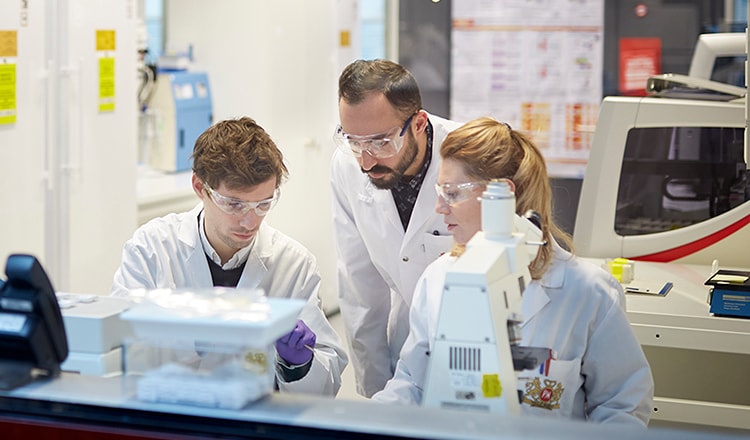Advances in science, technology, and regulation have enabled society to reduce the adverse effects of continuing with potentially harmful behavior. This is known as harm reduction.
Harm reduction is not equivalent to or better than stopping the original behavior, as it does not eliminate risk of harm, but it is better than continuing the original behavior.
Harm-reduction techniques can limit the impact our choices have across a range of issues, including on ourselves, others, society at large, or the environment. Take electric cars, for example. They take people from A to B just like their petrol-powered predecessors, but do significantly less harm to the environment in terms of the emissions generated on the same journey.
Similarly, innovation has led to the development of scientifically substantiated better alternatives to smoking that have the potential to present less risk of harm than cigarettes for adults who would otherwise continue to smoke.
The more we integrate harm-reduction products into our everyday lives, the greater the benefit for individuals, society, and the environment.
Tobacco harm reduction is central to the delivery of a smoke-free future
( Scrunching paper )
Jacek Olczak, CEO PMI, voiceover:
We are not the first industry or first company that comes with the better versions of the product to significantly reduce the harm created.
( Train whistle )
We are surrounded by many harm reduction solutions.
You take what is happening with the combustible engine,
( Car exhaust spluttering )
wouldn't it be much better if we just stop using a car?
( Traffic noises )
But this is also not feasible.
Is the electric car completely carbon neutral? No.
( Electric motor starting )
Music starts
Does the electric car have the least impact on the environment compared to the combustible engine cars? Absolutely yes.
( Motorbike engine roars )
The world knows a number of examples when problems have been solved by offering solutions which create much less harm, but somehow you know satisfy the same need.
The way we designed heated tobacco products is also based on the same principle.
People do enjoy smoking and we knew that this element of enjoyment somehow has to be carried to the new product to continue enjoying but significantly lower the risk, gathering that they will not adopt that product.
What is missing still at this stage is the recognition that the science exists which clearly points out that these products are the better alternative to continuing smoking.
We are living longer because we continuously were applying scientific advancements allowing us to maintain our past rituals but reduce negative impact.
Heated tobacco products or e-vapor products or pouches are better than smoking.
Jacek speaks to camera:
This is nothing else than the harm reduction concept.
[Music ends]
Text reads: Smoke-free products are not risk-free and provide nicotine which is addictive. The best choice any smoker can make is to quit tobacco and nicotine altogether. But those adult smokers who don’t, deserve access to and information about smoke-free alternatives.
Philip Morris International logo appears
Protecting your skin from the sun
The risks associated with exposure to the sun are well known. It can cause skin-related diseases, severe burns, and accelerated aging of the skin.
However, many people are prepared to take these risks to experience the sensation of the sun on their skin, and to socialize with friends, play sports, or increase their intake of vitamin D.
Whilst the safest option is to avoid exposure to direct sunlight altogether, there are many science-backed innovations that reduce the risks of sun exposure. For example, public health authorities recommend wearing UV-A and UV-B sunglasses and using broad-spectrum SPF 15+ sunscreen to protect oneself from the sun.
Driving climate change solutions
With motor vehicles, it became increasingly clear that emissions from combustion engines were damaging the environment, from poor air quality in our streets to the impact on the climate crisis.
However, driving is a part of modern life. The challenge was to keep people mobile but with significantly reduced harm to the environment. This has triggered a flurry of technological innovation, firstly with unleaded petrol, and then more recently the creation of electric vehicles that can offer comparable performance to combustion engine models, but with far lower emissions.
The more people switch to electric vehicles, the more positive environmental and health impact this harm-reduction measure will have in terms of air quality. Driving also exposes people to the dangers of accidents. However, thanks to technology and innovation, cars today have many harm-reduction measures in the event of a collision.
From ABS and ESP to airbags and seatbelts, these innovations—and many more—are designed to reduce the number of accidents and, if they do happen, lessen serious injuries or fatalities.
The importance of tobacco harm reduction
These examples of harm reduction play out in our daily lives.
As a society, we should apply a similar approach to tobacco. Research shows that in any given year, more than nine out of ten smokers will continue to smoke. There are around one billion smokers in the world, and based on current trends this figure is not expected to change in the near future. This demonstrates that cessation strategies alone, while effective, are not sufficient.
Today, scientifically substantiated better alternatives to smoking exist that do not burn tobacco. As a result, they emit fewer and lower levels of harmful and potentially harmful constituents compared to the smoke produced when tobacco is burned. While not risk-free, they are a much better choice than cigarettes for adults who would otherwise continue to smoke.
Therefore, like other harm reduction measures, adults who smoke should be given access to and accurate information about these products.
Existing efforts to discourage people from smoking and encouraging those who do to quit must continue. But supplementing these measures with a tobacco harm reduction approach can accelerate a decline in smoking. If better alternatives to smoking are also made available, and enough smokers switch to them, we can more rapidly achieve a significant milestone in global health—a world without cigarettes.
Who would deny society a harm-reduction opportunity like that?
Removing the risks of burning tobacco
Tobacco harm reduction was introduced to mitigate the damage caused by cigarette smoking—the most dangerous form of tobacco use, and the leading cause of preventable diseases, including cardiovascular disease, lung cancer, and chronic obstructive pulmonary disease.
Cigarette smoke contains flavors from the tobacco blend, as well as nicotine that exists naturally in tobacco leaves. It’s these elements in the smoke that consumers enjoy while smoking.
However, the burning process that releases the tobacco flavors and nicotine also produces over 6,000 chemicals, of which about 100 have been identified by leading public health agencies as causes or potential causes of smoking-related diseases.
For those adult smokers who would otherwise continue smoking, access to alternative products that have the potential to significantly reduce the risk of disease compared with continued smoking is critical.
When appropriately regulated, these harm-reduction products can complement and help accelerate existing efforts to reduce smoking prevalence.
How e-cigarettes and heated tobacco products work
So, what better alternatives are available in the tobacco harm reduction sphere? E-cigarettes and heated tobacco products are two of the leading smoke-free innovations which—when scientifically substantiated and regulated—enable adult smokers who would otherwise continue smoking to make a better choice.
There are differences between heated tobacco products and e-cigarettes, and adult smokers need to know about them.
Heated tobacco devices heat real tobacco within a specific temperature range, using an electronic heat-control system to prevent it from burning. By contrast, e-cigarettes vaporize an e-liquid solution containing nicotine and flavors when a user draws on it.
Both of these harm-reduction products contain nicotine, although some liquids for e-cigarettes are nicotine-free.
In heated tobacco products, nicotine is naturally present in the tobacco used in the product.
By contrast, in e-cigarettes, nicotine derived from tobacco is added to the e-liquid used in the product.
Because there is no burning involved, neither heated tobacco nor e-cigarettes produce ash or smoke. Instead, they use heating systems to generate an aerosol inhaled by users.
The difference between tobacco, smoke and nicotine
Title: What's The Difference Between Tobacco, Smoke And Nicotine?
Upbeat instrumental music starts
Tobacco is a plant which naturally contains nicotine.
Nicotine is addictive and not risk free.
But it is not the primary cause of smoking-related diseases.
It is the smoke produced from burning tobacco that is the main problem.
Tobacco smoke contains over 6,000 chemicals. Nicotine is one of them.
Around 100 of these chemicals are classified by public health experts as causes or potential causes of smoking-related diseases.
The best choice any smoker can make is to quite cigarettes and nicotine use altogether.
Smoke-free alternatives are only for adult smokers who would otherwise continue smoking.
They are not risk-free and contain nicotine, which is addictive.
Music ends
Nicotine: The misunderstood molecule
Since 2008, we have invested USD >14 billion in the research, development, scientific substantiation, and manufacturing capacity of our range of better alternatives to smoking.
Let’s be clear: The best choice for any adult smoker is to quit all forms of tobacco and nicotine completely.
However, although better alternatives to smoking are not risk-free, the high levels of harmful chemicals in cigarette smoke come from burning tobacco.
Removing the burning means significantly reducing the average levels of many of these chemicals.
But what about nicotine?
It’s common for people to wrongly associate all the dangers of smoking with nicotine, the well-known molecule in tobacco.
While it is addictive and not risk-free, nicotine is not the primary cause of smoking-related diseases.
These diseases are associated primarily with the exposure to toxic substances emitted in the smoke when the tobacco is burned—not with exposure to nicotine.
That’s why nicotine is a key ingredient in nicotine replacement therapies designed to help smokers quit smoking.
At the same time, nicotine does cause addiction to tobacco and nicotine-containing products, which can make them hard to quit.
It can also increase a person’s heart rate and blood pressure.
Minors, pregnant women, or nursing mothers, and people with existing conditions—such as heart disease, high blood pressure, diabetes, or epilepsy—should not use tobacco or nicotine-containing products.
The role of nicotine in tobacco harm reduction
For adult smokers who would otherwise continue to smoke, nicotine plays an important role in helping them switch to science-backed better alternatives to smoking.
In addition to taste, ritual, and the sensory aspects, nicotine uptake that is comparable to cigarettes is important for adult smokers to accept better alternatives to smoking.
That’s why we are developing a portfolio of scientifically substantiated smoke-free, nicotine-containing products that are a better choice for adult smokers than continued cigarette smoking. Independent studies have shown the tobacco harm reduction potential of making better alternatives than cigarettes available to adults who would otherwise continue to smoke.
If nicotine could be provided in a form that is acceptable and effective as a cigarette substitute, it could have a positive impact on hundreds of millions of people who smoke—and society more generally—by reducing smoking at a faster pace than traditional measures alone.
For that to happen, adults who would otherwise continue to smoke need access to better alternatives to cigarettes.
Many leaders of change in this field, such as public health organizations and regulatory bodies, agree that tobacco harm reduction to complement—not replace—existing tobacco control measures is the right route to take.
For instance, the Royal College of Physicians has said: “Nicotine is not, however, in itself, a highly hazardous drug,” adding, “[…] it is inherently unlikely that nicotine inhalation itself contributes significantly to the mortality or morbidity caused by smoking,”
The 2016 report goes on: “The main culprit is smoke and, if nicotine could be delivered effectively and acceptably to smokers without smoke, most if not all of the harm of smoking could probably be avoided.”
Marketing to the intended audience only
It’s vital better alternatives to smoking don’t fall into the wrong hands.
At PMI, we’re clear that our portfolio of better alternatives to cigarettes are strictly for use by those adults who would otherwise continue smoking.
Tobacco marketing is subject to extensive restrictions, including outright bans, throughout the world. However, what isn’t widely known is that our own standards are, in many places, higher than those of some governments.
We are committed to commercializing tobacco and other nicotine-containing products responsibly.
Our aim is to guard against marketing and sales of our smoke-free products to nonsmokers and minimize access for underage purchasers.
Our commercialization practices support this business vision: To make adult smokers aware that better alternatives to cigarettes exist and to move those who otherwise would not quit cigarettes to our smoke-free products.
Doing this responsibly by directing our marketing and sales activities toward adult smokers—providing them with accurate and relevant information about our products—is fundamental to our long-term vision of a smoke-free future.
The rigorous science driving our tobacco harm reduction work
PMI has transformed to become a consumer-centric organization led by science, innovation, and technology, providing better alternatives to adult smokers who would otherwise continue smoking.
We’re not just aiming to lead the way in the field of tobacco harm reduction—we’re determined to deliver a world where cigarettes no longer exist.
Our hope is that our range of better alternatives to smoking will eventually replace cigarettes.
So, how do we demonstrate that switching to these products results in a significant reduction in the risk of disease compared with continued smoking? We do this by following a rigorous scientific assessment program, transparently sharing our methodologies and findings—and welcoming assessment by independent experts.
The program applies well-recognized practices in toxicology, as well as an innovative Systems Toxicology-based approach to risk assessment.
Our program is in line with the draft guidance from the U.S. Food and Drug Administration (FDA) for a Modified Risk Tobacco Product (MRTP) Application.
In July 2020, the FDA authorized the marketing of our flagship smoke-free alternative to cigarettes as a modified risk tobacco product with reduced exposure information.
This made it possible to inform American men and women who don’t quit cigarettes that switching completely to our heated tobacco product significantly reduces the exposure to harmful or potentially harmful chemicals.
The FDA also stated that issuing an exposure modification order for our product was appropriate to promote the public health, and was expected to benefit the health of the population as a whole.
Its decision provided an important example of how governments and public health organizations can regulate smoke-free alternatives to differentiate them from cigarettes in order to promote the public health.
Forward-focused regulation for a smoke-free future
In a world of heightened innovation and awareness, common sense must prevail in the tobacco harm reduction debate.
Ignoring it means preventing millions of adult smokers from switching to a smoke-free product that is scientifically substantiated to be less harmful than cigarette smoking.
PMI believes that with the right regulatory encouragement and support from civil society for tobacco harm reduction, cigarette sales can end within 10 to 15 years in many countries.
Better alternatives to smoking are actively accelerating the decline in cigarette smoking beyond what can be achieved by tobacco control policy alone.
Just like car drivers or sunbathers, smokers have the right to informed choices and access to better alternatives.
And this, in turn, would open the door to the public health milestone of a smoke-free future.






